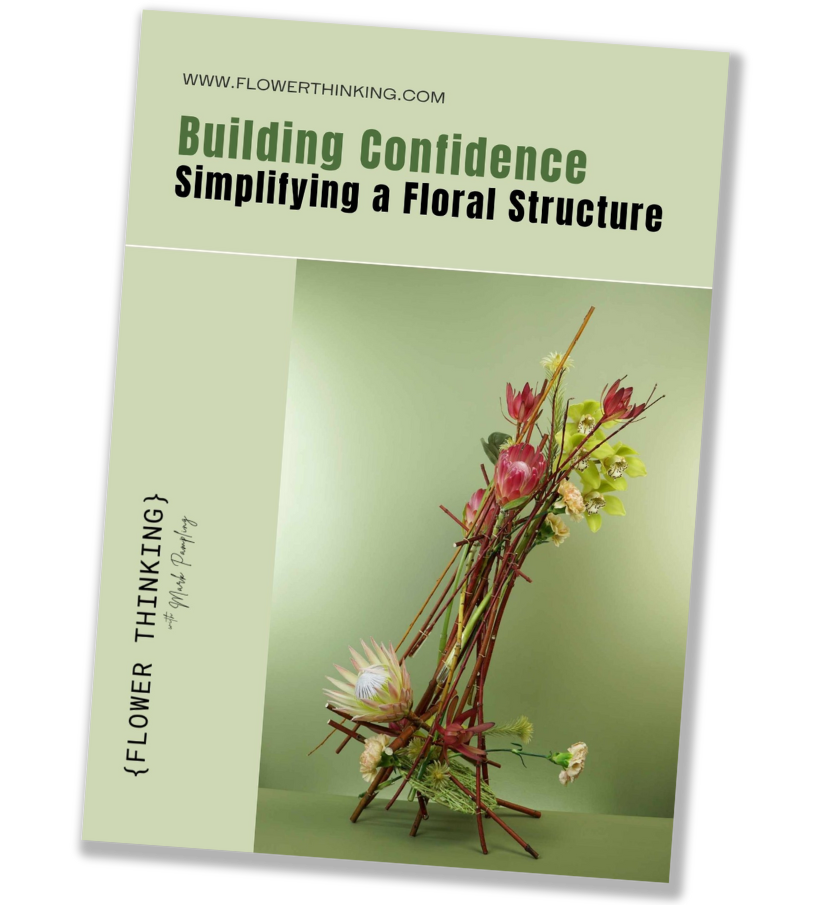
Test Tubes - A Sustainable Water Source
Share
Test tubes (or water phials) have long been an environmentally conscious choice, long before sustainability came strongly into focus. Of course, the measure of their sustainability also depends on what they are made of and how they are handled throughout the design process (creation, presentation, disposal). I have been a long time fan of test tubes and the creative freedom they offer - especially in contemporary work and in more structured designing. As I share my design process through workshops and courses, I frequently encounter questions about how to use test tubes. Here’s a few tips and notes on how to successfully incorporate test tubes into your floral designs.
Test tubes can be added to a base before the flowers are added, or incorporated as needed - it depends on the design style, process and your preference. Each has its benefits and drawbacks, and it’s worth experimenting with different methods to build up a repertoire of techniques to use at relevant times.
There’s also a host of different binding materials that can be used to attach test tubes into design, the most frequent being types of thin wires and waxed cords. Cable ties/zip ties or sometimes considered an option - they are fast, yet they offer less flexibility of placement and movement, and are definitely not a sustainable choice. In the following tips and examples I’m using paper covered binding wire, unless otherwise noted.
Binding in two places - this holds the tube in two places and is especially helpful when adding tubes to a design in advance of the flowers. Two firm binds will hold the tube in the intended direction and support stems placed into it.

Binding in one place - this method can be used effectively when the stem is held in one place (or more) by a bind. When the material is secure then the tube will be held in place by the stem and the single bind. It’s potentially a faster and neater way of working, and best suited to those designs where the tubes are being added in tandem with each stem.

Binding directly to a base/material/structure - a strong, firm result can be achieved by binding a tube directly onto the base or another material (without any binds or layers of wire between).

Adding ‘banks’ of tubes - bind rows of tubes together using the Tatami (or twirling) technique to create composite tube banks that can be added to designs for time efficiency. This method is particularly handy for larger scale designs. There is less control over the direction of individual tubes and therefore less potential also for controlling the placement of the flower heads.

Flexible binding - This method uses one or more twists between the tube and the base or structure and gives more freedom of movement to the tube itself, and therefore consequently the placement of the flower head. This can be done with one or two binds on a tube, depending whether it’s being attached in advance of the flowers or accompanying the flower placements.

Fixing directly to a stem - For some design purposes it’s convenient to have the test tube connected directly to the flower stem. It can then be threaded into or attached within a structure - the flower head can then be positioned with less consideration to the attachment of the tube.

Binding note:
Remember to bind firmly by gripping the ends of the wire where they twist and to continue twisting until the appropriate strength is achieved (not too tight, or the wire may break or, worse, plant stems might get crushed). Keep the wire ends twisting around each other, rope-like, for the best result.

Further tips/note:
Angles - It seems superfluous to state that tubes are designed to hold water and therefore need to be positioned upright - however, I have seen them used frequently this way in learning activities. A good general rule is to use tubes on angles of 30 degrees or above - the more upright the better.
Single layers - when taking the wire around the tube to connect it to the base or another material, use one layer. The more layers of wire that are wrapped the more susceptible the bind is to loosening or losing strength. Single layers are also neater and give a better finish.
Material choices - Some cut plant materials are thirsty and may not be totally suitable for using in test tubes. Of course, this will also depend on the time period the composition is required for. Give heavy drinking flowers (like Anigozanthos, Kangaroo Paw) longer or larger tubes so they get more water, or select flowers who don’t require such abundant hydration. More frequent topping up of the water, where possible, can be another solution.
Stem placements - Where possible, insert a stem of fresh material so it sits towards the bottom of the tube - giving it the best chance of accessing every last drop of water in the tube.
Maintenance - Use a test tube filler to add water as you work for maximum flower care, and keep one on hand or close to your completed composition so it can be easily maintained.
Leave them long - where possible, leave the stems on your materials longer than shorter. It means the line of the stem can be more readily used as a design element, and it also frequently allows the tube to be positioned away from the flower head and therefore used more discreetly.
Here are a few designs where I've used test tubes as a primary water source.


